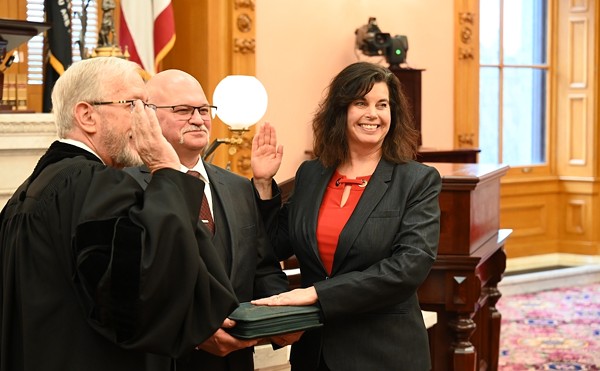At least twenty people were shot, five fatally, in several separate incidents during one of the most violent weekends in memory in Cincinnati.
On Saturday night into early Sunday morning, 17 people were shot in Over-the-Rhine, the West End and Avondale. On Sunday night and early Monday morning, an additional three people were shot in East Price Hill, Pendleton and Walnut Hills. Those incidents were on top of a fatal shooting in East Price Hill Friday evening.
Police officials say they believe all the incidents are unrelated. For reasons experts don't totally understand, shootings often spike in Cincinnati and other cities around the country during the summer months. That happened last year, when a spate of shootings killed and injured more than 20 people between May and July.
But the Queen City has never seen a surge in violence quite this abrupt and distinct — a phenomenon some city officials tied to the COVID-19 pandemic and resultant outdoor gathering.
"Due to the COVID-19 pandemic, we are facing unprecedented circumstances and challenges when it comes to fighting crime," Cincinnati Mayor John Cranley said in a statement Sunday. "These issues and this surge are not unique to Cincinnati. Cities nationwide are experiencing spikes in crime. During COVID-19 we have seen a huge increase in shootings as large numbers of people with guns are gathering in private homes and public places—-like Grant Park—when the bars close at 10pm. Guns are far too prevalent at these gatherings. Please do not attend gatherings because you could end up as an innocent victim.
With 60 killings to date, the Queen City is on pace to see more than 100 homicides this year — a 40-year high.
The first shooting of the weekend took place about 11 p.m. Friday night on Bassett Ave. in East Price Hill, killing 17-year-old Aurora McCarter. Police have arrested another teen for that incident.
Then, multiple incidents late Saturday night and Sunday morning ratcheted up the number of dead and wounded. The first happened a little before midnight in Walnut Hills on Lincoln and Gilbert Aves., wounding three.
Another took place about half an hour later on Chalfonte Ave. in Avondale, killing Antonio Blair, 21 and wounding three others.
Another shooting near Grant Park in Over-the-Rhine about 1:30 a.m. Sunday morning left two dead and 10 wounded. Police found 34-year-old Robert Rogers dead at the scene. Jaquiez Grant, 30, later died from his injuries at UC Medical Center.
The Avondale and Over-the-Rhine incidents meet the FBI's definitions for mass shootings — events in which four or more people are shot and killed or wounded.
At about 7:45 on Sunday morning, yet another shooting on Linn Street in the West End took the life of Myron Green, 39. Green was a father of four and a youth football coach.
Violence flared again Sunday night, when three separate, non-fatal shootings occurred. The first happened on May Street in Walnut Hills, where a man sustained gunshot wounds to both hands.
About an hour later, a woman was also shot in the hand on Mount Hope Ave. in East Price Hill.
The final shooting Sunday night came at a party at an Airbnb on Broadway in Pendleton, where a man was found shot in the back about 10:30 p.m.
Cincinnati City Councilmember Greg Landsman also laid some of the blame on the global pandemic, which he said is making gun violence worse.
"I’ve encouraged the Administration to work with us and the community – and every single one of our partners – on new efforts to keep our children and families safe," Landsman said in a statement Sunday. "We have to do more to get these guns, shift more of our resources to focus on violent crime, and strengthen community-based problem-solving."
Other elected officials reacted with calls to support Cincinnati Police.
"(Seventeen) shootings and 4 deaths overnight," councilmember and mayoral candidate David Mann tweeted Sunday. "This cannot be the new normal as 4 families grieve their losses. We have a lot to do working with and supporting our police and understanding how this violence can reined in. We have no higher priority."
Many of the weekend's shootings happened in areas with low incomes. Social scientists contend that lack of opportunities and exposure to past trauma — violence, poverty and other stressors — can increase crime rates in communities with dim economic prospects. That's a dynamic the current pandemic is likely exacerbating, some experts and city officials say.
"
In recent years, a debate has popped up about more systemic, public health-oriented approaches to violence reduction that take into account exposure to trauma, poverty and other socioeconomic conditions.
Some experts believe that more police officers won't solve the complex, knotty problems that spark neighborhood violence.
“We published a study synthesizing all of the studies of police force size and crime and could not find a scintilla of evidence that expanding a police force would reduce crime,” John Eck, a University of Cincinnati criminal justice professor, told CityBeat in 2017. That study looked at both crime data and police department size data from 1968 to 2013 and found no correlation between the two.
For Eck, the key can be found in changing strategy, not changing size.
CPD has made efforts to change its approach. In 2016, the department rolled out a new initiative called Place-Based Investigations of Violent Offender Territories, or PIVOT.
PIVOT is designed to further efforts like the Cincinnati Initiative to Reduce Violence, or CIRV, which started in 2007. PIVOT combines CIRV’s focus on the networks linking the relatively small number of violent offenders and the community with data-driven, intensive attention to chronic crime locations.
In the aftermath of the violence this weekend, some officials gave a brief nod to the idea that larger systemic issues lurk behind spikes in violence, though no specific policy proposals have been spelled out yet in reaction to the recent shootings.
"Let’s also be clear about the real goal here: it can’t just be to be reactive once a crime or tragedy has occurred," councilmember and mayoral contender P.G. Sittenfeld tweeted Sunday. "We must be preventative so that such incidents don’t happen in the first place. And a big part of that means taking holistic approaches to root causes. Our community, especially our young people, must believe they have real pathways to opportunity."






